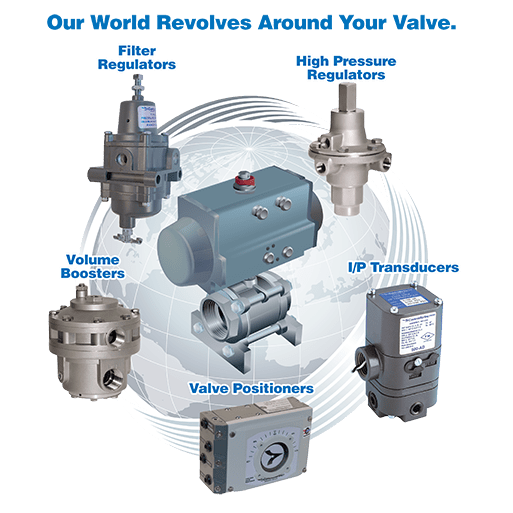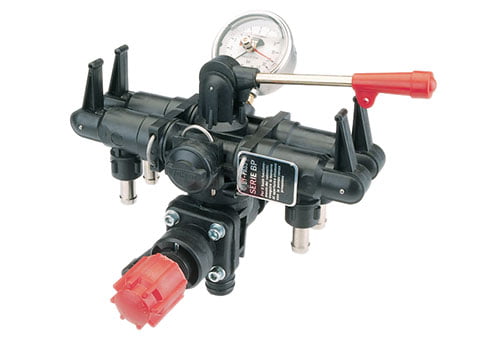Comprehending the Relevance of Control Valves in Process Automation

Maximize Power Cost Savings and Comfort With Advanced Building Automation Controls
In the realm of modern design and facility management, the integration of innovative structure automation manages stands as a pivotal advancement. By using the power of automation, structures can adapt, respond, and progress in ways that were once inconceivable.
Energy Performance Conveniences
Energy efficiency benefits can significantly decrease energy intake and functional expenses in structures. Energy-efficient systems, such as sophisticated building automation controls, can optimize the use of resources like heating, lights, and air conditioning, leading to reduced energy expenses over time.
Moreover, enhanced power performance can extend the life expectancy of building equipment and systems. By running extra effectively, HVAC systems, light, and various other structure components experience much less damage, leading to decreased maintenance and substitute costs. Additionally, energy-efficient structures usually regulate higher residential property worths and rental rates, providing long-term economic benefits to proprietors.
Additionally, power performance can boost passenger comfort and efficiency. Properly managed indoor atmospheres with optimum illumination and thermal problems create a more pleasant and favorable work space, leading to enhanced staff member fulfillment and efficiency. In general, the power performance benefits connected with advanced building automation controls are complex, encompassing expense financial savings, ecological stewardship, and resident health.
Enhanced Convenience Control
Enhancing convenience control in structure atmospheres needs an advanced integration of advanced automation systems for optimum owner health. By using advanced building automation controls, centers can tailor the indoor setting to satisfy the certain requirements and preferences of owners. control valves.
By integrating these advanced controls, structures can not only boost comfort however also boost energy performance by enhancing system procedures based on real occupancy and usage patterns. Ultimately, focusing on resident comfort with sophisticated automation systems leads to an extra delightful and much healthier interior atmosphere.
Functional Performance Improvements

Furthermore, the execution of real-time monitoring and analytics tools makes it possible for building drivers to determine energy ineffectiveness and functional abnormalities without delay. By constantly keeping an eye on energy usage patterns and system efficiency metrics, changes can be made in real-time to optimize energy usage and make certain peak operational effectiveness. control valves. In addition, incorporating demand feedback strategies right into building automation controls can further improve operational effectiveness by dynamically readjusting power usage why not try here based on grid conditions and prices signals
Indoor Environment Optimization
Reliable interior environment optimization is a fundamental facet of structure automation controls, guaranteeing owners' convenience and well-being while maximizing energy savings. By utilizing sophisticated sensing units and controls, developing automation systems can constantly check and readjust temperature level, moisture degrees, air quality, and ventilation to produce an ideal indoor setting. Keeping comfy and consistent conditions not just boosts owner satisfaction however additionally increases performance and general well-being.
Indoor climate optimization likewise plays an essential role in power efficiency. By fine-tuning air flow, air conditioning, and heating systems based upon real-time information and occupancy patterns, building automation controls can dramatically minimize energy Extra resources intake - control valves. For example, applying approaches such as demand-controlled air flow and thermal zoning can help decrease energy waste while ensuring that each location of the building obtains the needed conditioning.

Lasting Setting Creation
Building automation manages not just optimize indoor environment problems for energy performance and occupant comfort however likewise lay the foundation for producing a lasting setting via strategic management of systems and resources. By integrating advanced structure automation innovations, such as sensors, actuators, and smart software program, centers can readjust and keep an eye on energy usage in real-time to decrease waste and minimize their carbon footprint. These systems make it possible for predictive upkeep, identifying possible problems before they rise and enhancing equipment efficiency to enhance long life and effectiveness.
Moreover, lasting environment production prolongs past energy monitoring to include water conservation, waste decrease, and indoor air top quality improvement. Structure automation controls can regulate water use, discover leakages, and make sure proper garbage disposal practices, adding to overall sustainability initiatives. Additionally, by keeping track of and regulating ventilation and filtration systems, these modern technologies enhance passenger health and efficiency while reducing power consumption related to HVAC operations.
Verdict
Finally, progressed structure automation controls offer considerable advantages in terms of energy cost savings, convenience control, functional efficiency, indoor climate optimization, and developing a sustainable atmosphere. By implementing these controls, buildings can attain ideal performance while minimizing power usage and boosting occupant comfort. It is obvious that the usage of advanced automation innovation is crucial in enhancing building performance and producing an extra lasting future.
Power efficiency benefits can considerably minimize power usage and functional expenses in structures. On the whole, the power performance benefits associated with advanced building automation controls are multifaceted, encompassing cost financial savings, ecological stewardship, and passenger wellness.
Furthermore, incorporating demand feedback approaches into building automation controls can further boost operational efficiency by dynamically adjusting power usage based on grid problems and rates signals.
Structure automation manages not only maximize indoor climate problems for energy performance and passenger comfort yet likewise lay the foundation for developing a sustainable environment via tactical monitoring of systems and resources.In verdict, advanced structure automation manages deal considerable advantages in terms of energy financial savings, convenience control, operational effectiveness, interior climate optimization, and producing a lasting atmosphere.